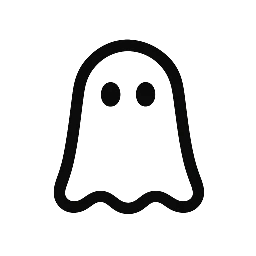Understanding Common Paranormal Myths and Facts
October 6, 2025
The enduring human fascination with the paranormal is a powerful testament to our perpetual desire to pierce the veil of the unknown, yet this intrigue is often clouded by sensationalism and misunderstanding. This article will serve as a grounding journey through the most common supernatural myths that permeate pop culture and the surprising psychological or scientific facts that often underpin them. By separating the fictional specter from the factual kernel, we can achieve a clearer, more informed perspective on phenomena that many people genuinely experience or believe in, transforming blind belief into thoughtful inquiry. This exploration is valuable because understanding the roots of these widely held beliefs offers profound insights into human cognition, cultural anxiety, and the societal construction of reality itself.
Sometimes, the simplest moments hold the deepest wisdom. Let your thoughts settle, and clarity will find you.
The widespread myth of “haunted locations” being characterized by floating apparitions and poltergeist activity often finds its factual basis in subtle, yet powerful, environmental effects that manipulate human perception. For example, many buildings popularly known as haunted often suffer from infrasound—low-frequency vibrations below the range of human hearing—which can induce feelings of dread, anxiety, and visual distortion, sometimes even causing the eyeballs to vibrate in a way that mimics seeing movement from the corner of the eye. Similarly, the belief in residual energy, where past traumatic events are replayed, can often be explained by studies on expectant set theory and priming, where a person’s existing belief that a location is haunted primes their brain to interpret every normal creak, shadow, or temperature drop as evidence of a ghostly presence. This scientific context does not dismiss the experience of the person, but it does relocate the cause from an external spiritual entity to an internal neurological one, providing a powerful alternative explanation for these common paranormal claims.


As we bridge the chasm between myth and reality, it is essential to consider the pervasive legend of psychic ability, such as telepathy or precognition, and its connection to cognitive bias. While the myth posits a literal ability to read minds or see the future, the factual reality is often rooted in a combination of high-level pattern recognition, selective memory, and the powerful psychological force known as confirmation bias. A purported psychic might make numerous vague predictions, but the client will selectively remember the few that align with later events while forgetting the majority that missed the mark, thereby “confirming” the psychic’s genuine ability in their own mind. An alternative perspective suggests that while literal paranormal powers remain unsubstantiated by rigorous testing, the very belief in them fulfills a critical function by giving people a feeling of agency and control in chaotic personal situations, allowing them to proceed with less anxiety because they feel they are “prepared” or “guided.”
Key Insights
Ultimately, the key insight is that our fascination with the paranormal endures not because all the myths are true, but because they expertly address the deepest psychological anxieties of the human condition, particularly our fear of the unknown and our desire for meaning. The greatest takeaway is that understanding the “facts” behind the myths is empowering, offering a lens through which we can appreciate the complexity of our own minds and environment. We are encouraged to reflect that a sound explanation for a “ghost” does not diminish the profound power of the experience itself, but instead allows us to apply a healthier, more scientific skepticism that strengthens our critical thinking skills in all aspects of life. Moving forward, the actionable advice is to always greet a supernatural claim not with immediate dismissal, but with a curious question: what underlying human need or natural phenomenon might this belief be attempting to explain?


Leave a Reply